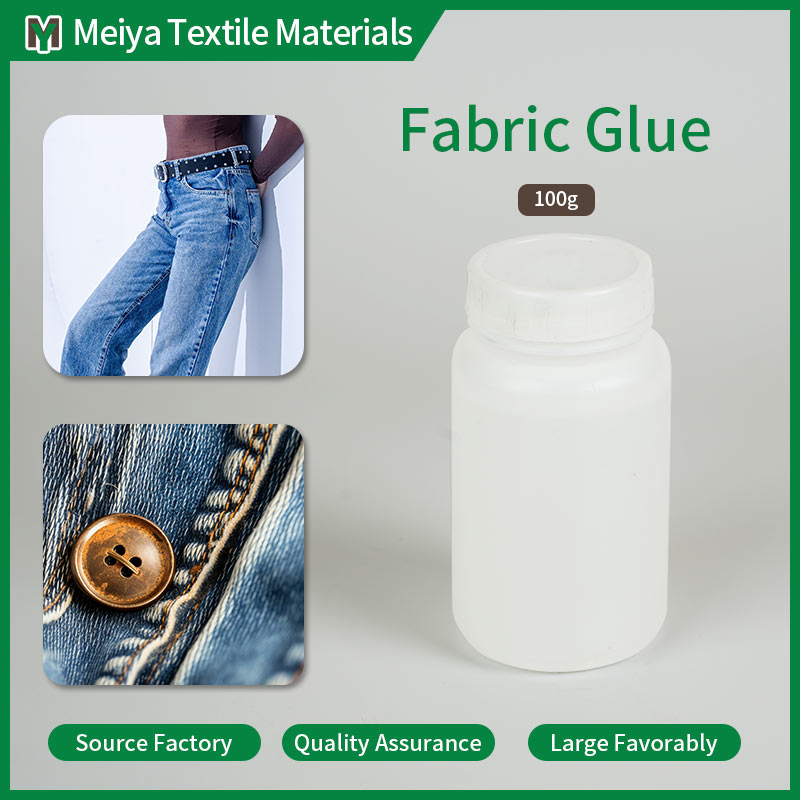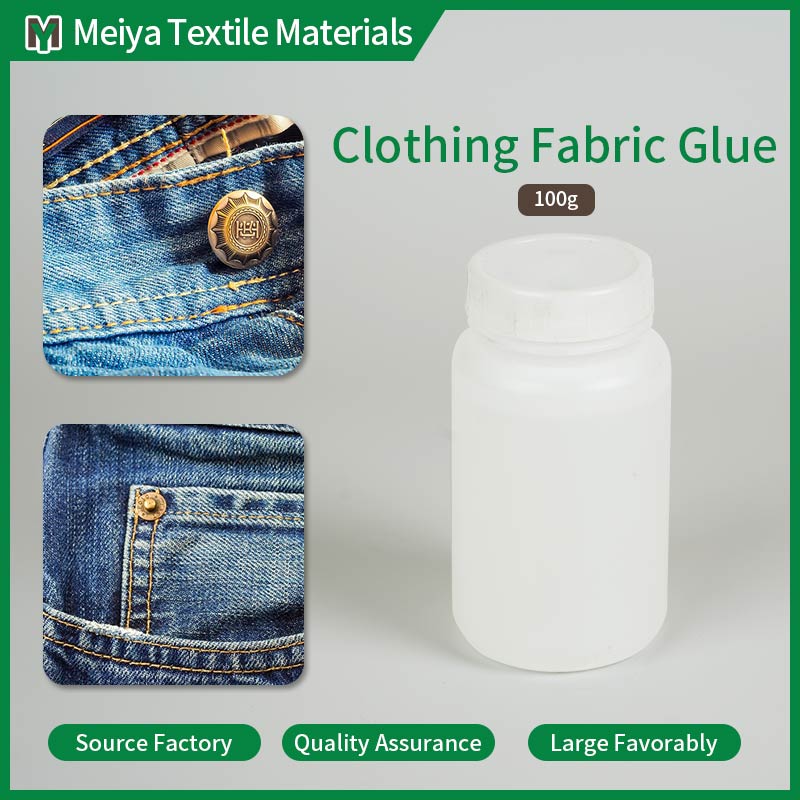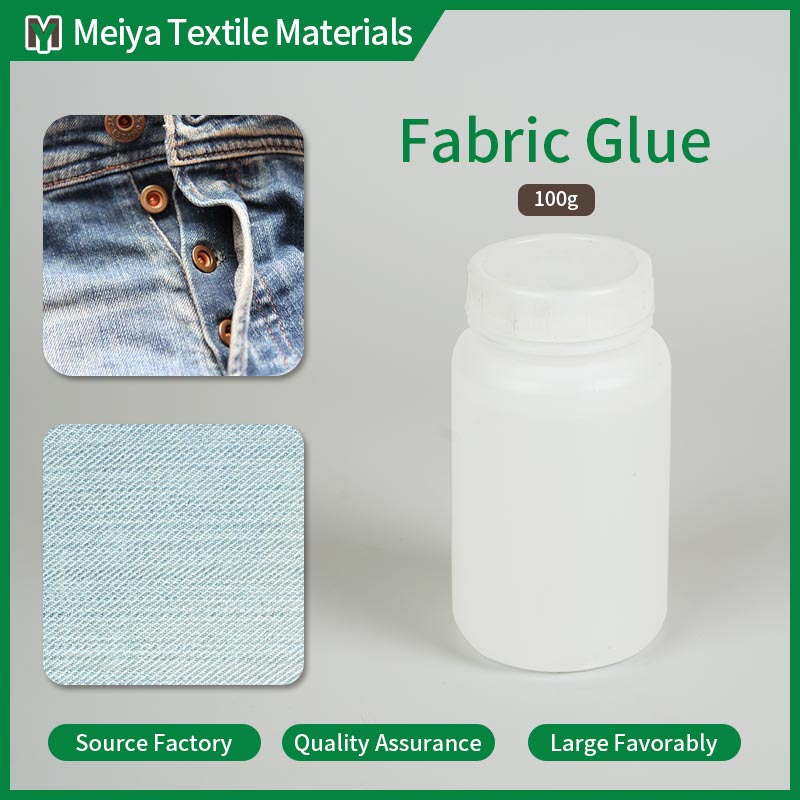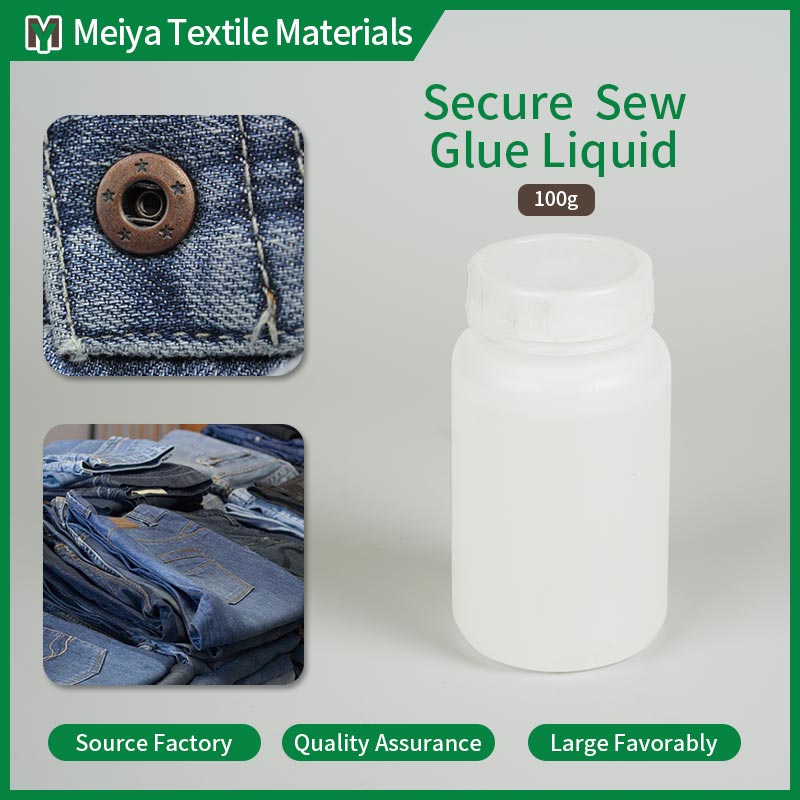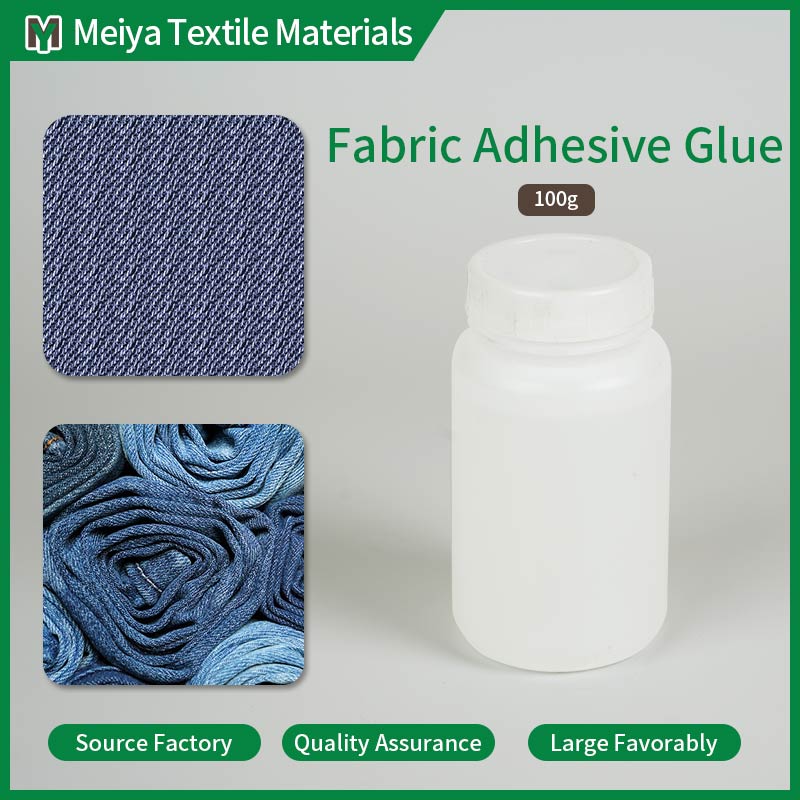Denim Fabric Glue
Please click the button below to contact us.
Introduction:Denim Fabric Glue is relatively easy to use, and both workers in professional garment processing factories and ordinary consumers can quickly master its usage skills. It can help users solve problems in a timely manner and improve the service life and wearing comfort of clothing.
Product Description
Denim Fabric Glue is an adhesive specifically designed to bond denim. Denim is a thick, durable cotton twill fabric commonly used to make clothing such as jeans and jackets. Denim Fabric Glue can effectively bond the various parts of denim together to form a strong connection. The use of Denim Fabric Glue can replace traditional sewing methods or be used in conjunction with sewing to improve production efficiency and product aesthetics.
Denim Fabric Glue Features:
Denim Fabric Glue is designed specifically for denim, and it works perfectly with the fiber structure of denim to provide the best possible bonding. It penetrates deep into the fiber gaps of denim, creating a strong bond that ensures that the denim will not separate easily after bonding.
Good bonding: This adhesive has extremely high bonding strength, and it maintains stable bonding performance both for dry denim and in wet, washed or dry-cleaned environments. The bonded seams are not only strong, but also flexible and durable, and will not fail due to repeated stretching, bending or friction.
Easy to use: Denim Fabric Glue is easy to use and does not require complex tools or equipment. It is usually sold in liquid or paste form, which is convenient for users to apply and use as needed. Whether it is used manually or on industrial production lines, it is easy to use, saving time and labor costs.
Fast bonding: This adhesive has the characteristics of fast curing, and can form an effective bond in a short time after application. This means that users do not need to wait for a long time for the glue to dry when repairing or making denim clothing, which improves work efficiency. The fast bonding characteristics also make Denim Fabric Glue very practical in emergency repairs or quick production situations.
Wide range of applications: In addition to being suitable for denim of various thicknesses and styles, Denim Fabric Glue can also be bonded with other common fabric materials such as cotton, linen, chemical fiber cloth, etc. This makes it have a wide range of application value in many fields such as clothing production, home textile processing, accessories production, etc., and can meet the needs of different users.
Environmental protection and safety: Denim Fabric Glue usually uses non-toxic and harmless raw material formulas, does not release harmful substances during use, and is friendly to the human body and the environment. It meets relevant safety standards and environmental protection requirements, and users can use it with confidence without worrying about the impact on health.

Appilcation of Denim Fabric Glue
Denim Repair and Reinforcement: When jeans, denim jackets and other denim products have holes, wear or need to be reinforced, Denim Fabric Glue can be used to repair quickly and effectively. It can tightly bond the damaged parts to the original fabric, restore the integrity and durability of the clothing, and extend its service life.
Denim Clothing Production and Design: In the production process of denim clothing, Denim Fabric Glue can replace some sewing processes, or be used in combination with sewing to improve production efficiency and product aesthetics. For example, when making denim patchwork clothing, denim accessories such as belts, bags, etc., the use of adhesives for bonding can achieve more sophisticated and unique design effects to meet the creative needs of fashion designers.
Clothing Processing Factory: For all kinds of clothing processing factories, especially those focusing on denim clothing processing, Denim Fabric Glue is an indispensable auxiliary material. It can help factories improve production efficiency, reduce labor intensity, and ensure the stability of product quality. In large-scale production, the rapid bonding characteristics of adhesives can significantly shorten the production cycle and reduce production costs.
Home textile processing: In addition to the clothing field, Denim Fabric Glue can also be used in the processing and production of home textiles. For example, when making household items such as curtains, sofa covers, and bed sheets made of denim, using adhesives for bonding can achieve a smoother and firmer splicing effect, improving the quality and appearance of the product.
Handicraft production: For handicraft enthusiasts and creators, Denim Fabric Glue provides convenience for handmade creations of denim. It can be used to make various handicrafts such as denim stickers, decorations, and small ornaments, giving full play to the unique texture and style of denim, and creating works with personality and creativity.
Stage costumes and props production: In the production of stage costumes and props, Denim Fabric Glue can meet the requirements of fast production, special styling, and durability. Due to the particularity of stage performances, costumes and props need to be frequently replaced and used. The fast bonding and high strength characteristics of adhesives can ensure that the production is completed in a short time and that there will be no bonding failure during the performance.
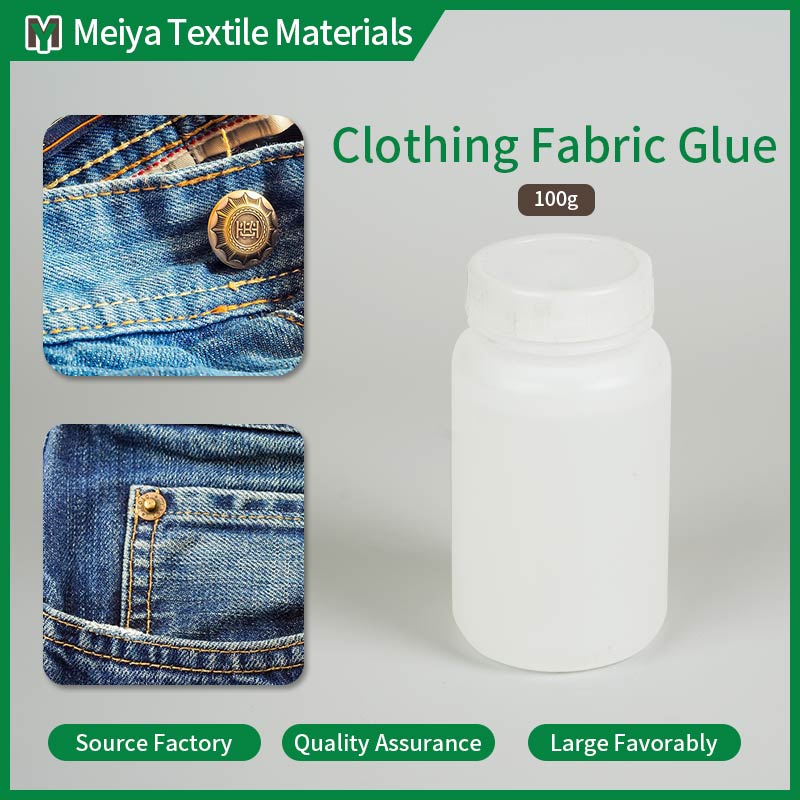
Denim Fabric Glue Instructions for use:
Preparation before operation: Before using Denim Fabric Glue, you need to ensure that the bonding surface is clean and dry. Use a clean cloth or cotton swab to remove dust, oil, impurities, etc. on the surface of the denim to ensure that the adhesive can fully contact the fabric fibers and achieve the best bonding effect. At the same time, check the shelf life and scope of application of the adhesive to ensure that it meets the current usage needs.
Apply the right amount: When applying Denim Fabric Glue, you must master the amount of adhesive according to the bonding area and fabric thickness. Applying too much will not only cause waste, but may also cause glue overflow, affecting the appearance and bonding effect; applying too little may not form an effective bond. The adhesive should be evenly applied to the surface to be bonded, ensuring full coverage and moderate thickness.
Bonding and fixing: After applying the adhesive, quickly and accurately align the two parts of the denim and apply appropriate pressure to allow the adhesive to fully penetrate and bond. In a short period of time after bonding, it is necessary to maintain a certain pressure and fixation to avoid the bonding part from moving or being affected by external forces to ensure that the adhesive can fully cure and form a strong bond. Tools such as clamps and heavy objects can be used for auxiliary fixation.
Curing time: Understanding the curing time of Denim Fabric Glue is crucial to ensuring the bonding effect. Different adhesive brands and models have different curing times, usually between a few minutes and tens of minutes. During the curing time, operations such as pulling and bending the bonding part should be avoided to avoid affecting the bonding strength. Only when the adhesive is fully cured can the bonded denim achieve the best performance.
Storage conditions: Denim Fabric Glue should be stored in a cool, dry, well-ventilated place, avoiding direct sunlight and high temperature environment to prevent the adhesive from deteriorating and failing. During storage, the adhesive should be sealed well to prevent dust and impurities from entering and affecting the use effect. At the same time, pay attention to the shelf life of the adhesive. Expired adhesives may have problems such as decreased bonding performance and should not be used.
Safety precautions: Although Denim Fabric Glue is generally environmentally friendly and safe, personal protection should still be taken during use. Avoid contact between the adhesive and sensitive parts such as eyes and mouth. If contact occurs, rinse immediately with plenty of water and seek medical attention. For people with allergies, it is best to perform a skin test before use to prevent allergic reactions. In addition, use the adhesive in a well-ventilated environment to reduce possible odor discomfort.

